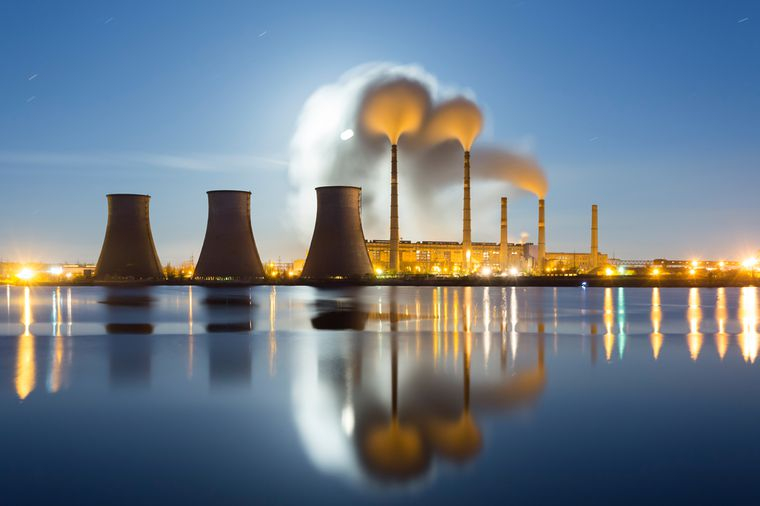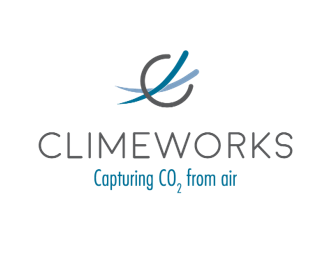123Fab #22
1 topic, 2 key figures, 3 startups to draw inspiration from

Towards CO2 Capture
”The deployment of carbon capture and storage (CCS) technology is not optional if the world hopes to meet the targets set out in the Paris Climate Agreement”, stated recently the International Energy Agency. Carbon Capture and Storage is a technology that can capture up to 90% of the carbon dioxide (CO2) emissions produced from the use of fossil fuels in electricity generation and industrial processes, preventing the CO2 from entering the atmosphere, or removing the CO2 that already reached the atmosphere. The CCS chain consists of three parts: capture, transport and storage of carbon dioxide emissions. In this newsletter, we will focus on the carbon capture segment exclusively.
There are two types of carbon capture methods: CO2 can either be captured at its source (power plants, industrial processes) and then stored in non-atmospheric reservoirs or it can be removed from the atmosphere (e.g. with forests). Most technologies fall into the first segment. In the context of increasing ecological awareness, interest in carbon sequestration has grown as capture could achieve 14% of the global greenhouse gas emissions reductions needed by 2050.
The main sources of CO2 containment that need to be tackled are the following:
- Natural Gas extraction: 10 to 20% of the CO2 contained in natural gas needs to be extracted before any usage – represents 73% of the industrial CO2 captured
- Hydrogen production: a lot of CO2 is produced during the steam reforming production process – represents 18% of the industrial CO2 captured
- Biogas: up to 50% of CO2 needs to be extracted to have a proper quality after biogas production
Carbon capture technologies separate CO2 from other gases by one of these three methods:
- Pre-combustion capture: it removes CO2 from fossil fuels before combustion is completed, through processes such as gasification (converts carbon-based materials by reaction at high temperature into synthesis gas) or reforming (converts carbon-based materials by reaction with water to produce synthesis gas, hydrogen or carbon monoxide). The Caledonia Clean Energy Project in the UK (due for the mid-2020s) will use gasification to capture more than 90% of the carbon emitted from a natural gas power plant.
- Post-combustion capture: it removes diluted CO2 (~5-15% CO2 concentration) from the flue gases once the fuel has been fully burned within the air. R&D efforts in post-combustion capture are focused on sorbents, membrane systems, and also novel concepts (e.g. hybrid systems that efficiently combine attributes from multiple key technologies). The Petra Nova project in Texas is the largest post-combustion capture solution and removes 92% of the CO2 from the plant.
- Oxy-fuel combustion systems: fossil fuels are combusted in a nearly pure oxygen environment, as opposed to air. The main purpose of using oxy-fuel combustion is to generate flue gas with very high concentrations of CO2 and water vapor, making it possible to separate or capture the CO2 from the flue gas purely by low-temperature dehydration and desulfurization processes. Air Liquide is taking part in several large-scale research projects in Europe and in North America, testing oxy-fuel combustion processes, such as the Lacq Project in the south of France where Air Liquide will supply TOTAL with oxygen at a rate of 240 tonnes per day.
Carbon capture is technically feasible and has existed for 40 years. Nearly two dozen commercial-scale carbon capture projects are operating around the world and 22 more are underway. For instance, since 2017, the ADM Illinois Industrial Carbon Capture & Storage Project has been capturing CO2 from an ethanol production facility and sequestering it in a nearby deep saline formation. The project can capture up to 1.1 million tons of CO2 per year.
Although carbon capture is feasible, there are economic reasons that explain its limited adoption. Most CCS applications are currently not economically viable and there is a lack of government policies to support the technology. Two changes would be required for CCS to become economically viable in those categories. First, the cost of carbon capture must come down, either through the development of new technologies or through scale and experience effects. Second, the value of captured CO2 emissions must increase, through new uses and sources of demand. The carbon tax could accelerate its adoption if it is high enough to be binding (as in Norway) or if there is a post-capture carbon market (as in the US where petrol companies buy carbon to increase their productivity, although this example is not a very eco-friendly approach). In France, on the contrary, the carbon tax is too low compared to the high investments that require carbon capture.
Yet, more and more startups are positioning themselves in this segment and are raising funds. In June 2020, Climeworks, a Swiss climate startup, raised 73 million Swiss francs ($76 million) in a private funding round. It builds machines that capture CO2 from the air and store it in a solid-state underground. It also takes the CO2 and delivers it to industrial clients, such as The Coca-Cola Company, to put bubbles in drinks.
Finally, with regard to its environmental impact, attention should be drawn to the need to use additional fossil fuels for carbon capture solutions. The use of CCS with renewable biomass is one of the few carbon abatement technologies that can be used in a ‘carbon-negative’ mode.
All in all, the carbon capture market has existed for half a decade, but the timing seems right. Plans for more than 30 new integrated CCUS facilities have been announced since 2017 and many startups are addressing this market as well. Furthermore, the trend in CCS investment is on the rise. On September 1st, 2020, the U.S. Department of Energy announced the award of approximately $72 million in federal funding to support the development and advancement of carbon capture technologies.
2 Key Figures
56 Carbon Capture startups
in the world registered by Crunchbase
Market size expected to reach $6.1bn by 2027
The global carbon Capture market size was valued at $1.8bn in 2019 and is expected to reach $6.1bn by 2024.
3 startups to draw inspiration from
This week, we identified three startups that we can draw inspiration from: SeeO2, Climeworks and C-Capture.

SeeO2
See O2 Energy is a Canadian startup working to efficiently convert carbon dioxide and water into marketable and clean value-added products using reversible fuel cell technology. This solution makes it possible to effectively capture and use carbon to produce fuels, power, heat, and oxygen.

Climeworks
Climeworks is a spin-off company that develops a carbon dioxide reclaiming system. Its product extracts carbon dioxide from ambient air. It builds three models based on the amount of CO2 extracted. Its chief target markets are F&B companies that use CO2 for aeration in food processing and greenhouse owners. It also intends to enable the creation of carbon-neutral synthetic fuels using extracted CO2.

C-Capture
C-Capture, a spin-off from the University of Leeds, developed a bottom-up approach to design solvent systems for the removal of CO2 from gas streams. The patented technology captures CO2 from methane gas streams as it passes through and upgrades biogas. Reversibly captures carbon dioxide from power stations, steel and cement production, and fermentation units.
